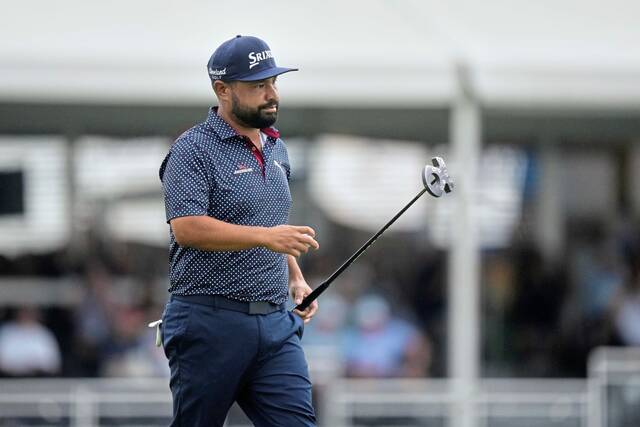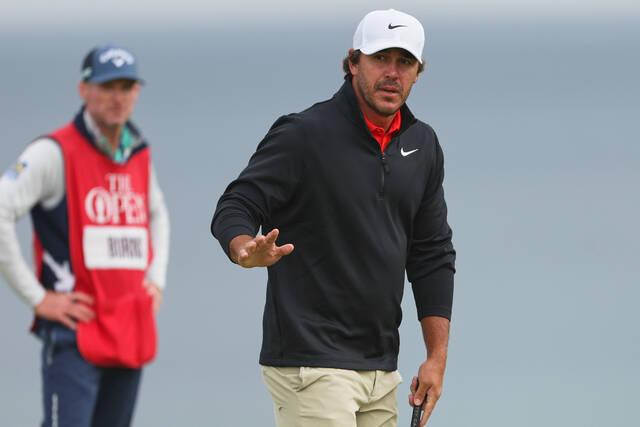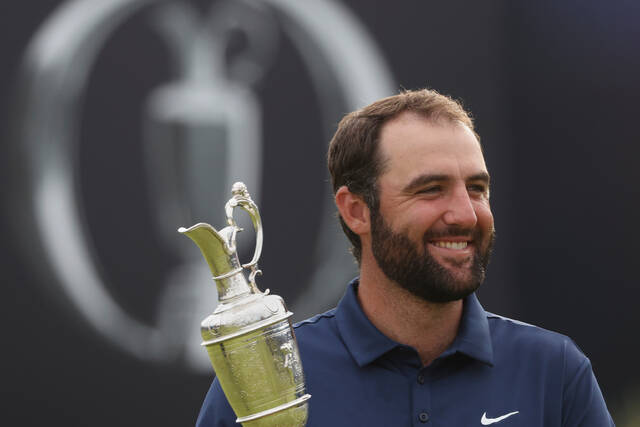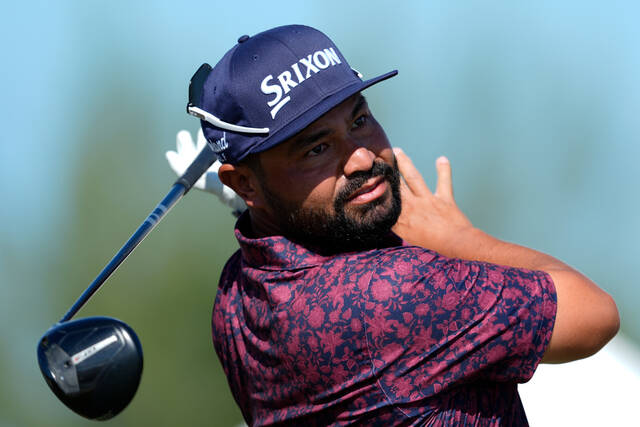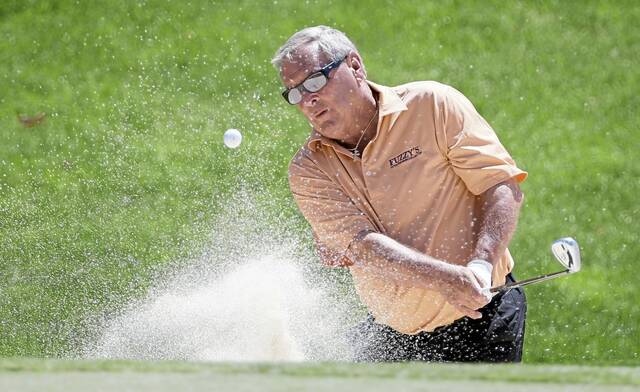Maybe it was foreshadowing or a prediction or just a fact based on research and evidence.
Going forward, though, take John Bodenhamer and Jeff Hall at their word.
The USGA’s chief championships officer and managing director certainly knew what they were talking about when, well before the 125th U.S. Open teed off, each said the 17th hole at Oakmont Country Club would be pivotal in deciding a champion.
As J.J. Spaun pounded a 309-yard drive onto the green, lagged a 22-footer and then tapped in for birdie on the par 4, the fortune tellers proved to be right.
Spaun will forever be known for draining a thrilling 64-foot birdie putt on No. 18 to seal his first major title. But it was about 15 minutes earlier when he locked up the U.S. Open on Sunday evening.
“After my tee shot on 17, I knew it was really good,” Spaun said on the NBC’s Golf Central postgame show. “And when you start hearing more of the crowd chanting your name, you know where you are at without looking at the leaderboard.”
That tee shot on 17 turned out to be a life-changing moment, one that set him up for a confident walk to the tee box on 18 and, soon after, an emotional walk up the 18th fairway to the applause of thousands of onlookers in the grandstands. It all culminated with tears of joy after knocking in the birdie putt to clinch a two-shot victory.
But that dramatic finish was set up on the elevated and tight green atop the hill behind him, surrounded by bunkers and 5-inch rough.
It was about a month ago when Bodenhamer spoke at length about the importance of the 17th, calling it a pivotal hole while citing the 1953 championship when Ben Hogan drove the green, made birdie and won the U.S. Open. Johnny Miller (1973) and Dustin Johnson (2016) each made crucial pars there while their nearest competitors struggled en route to their victories.
Added Hall: “It’s played a role in just about every U.S. Open. And it will do so again this go-round.”
Hall also said the USGA set-up team would “tempt (the players) to do something foolish.”
From moving the tee box throughout the week to setting pins in uncomfortable positions, the USGA certainly gave players something to think about each day, especially in the final round.
“The thing I love most about 17, no matter how you choose to play it, you have to hit a great shot at some point,” said Devin Gee, Oakmont’s head pro and director of golf who played as a marker Saturday and Sunday. “So if you’re going to drive it, you have to hit a great drive to get in position, like on the proper side of the hole to give yourself a pitch that you can get close. If you lay up into the driving area where you’re going to have 80 to 120 (left), you have to hit a great wedge shot.
“So again there, I think you’ll see which side of the green — is the hole location right or is the hole location left? — that’ll determine the strategy. But no matter how you decide to play that hole, you’re going to have to hit a great shot at some point. It’s an incredible par 4.”
Statistically, the 17th played as the easiest hole at Oakmont Country Club throughout the week. Playing between 305-327 yards during the championship rounds, it had a stroke average under par (3.840). It yielded three eagles and 141 birdies, none bigger than Spaun’s, which moved him to even-par and put him in the driver’s seat heading into 18, needing only par to lock up the U.S. Open.
It’s safe to say the 17th was Spaun’s favorite hole throughout the week as he birdied all four rounds.
Others can’t say the same.
While Robert MacIntyre (1-over), Viktor Hovland (2-over) and Cameron Young (3-over) birdied there Sunday, Carlos Ortiz managed par, and Tyrrell Hatton settled for bogey and finished tied for fourth at 3-over-par to thwart their attempts at contention.
“The finish at the end hurts a lot,” Hatton said. “If you’re going to miss the 17th with that pin, you have to miss it right. I did my bit. I feel like I was extremely unlucky to finish where it did.
“Yeah, what happened on 17 is going to hurt a lot for a long time. It was the first time I’ve been in contention in a major, and that was exciting, and unfortunately, I feel like through a bit of bad luck I had momentum taken away from me and ultimately ended up not being my day.”
Hatton’s tee shot landed in the rough on the downslope of the Big Mouth bunker. His second shot then went to the upslope of the same bunker. He then chipped onto the fringe, pitched next to the pin and tapped in for bogey.
“You think (of) stopping on the downslope in the rough? Like, that’s ridiculous. As I said, if you’re going to miss that green, you have to miss it right in the bunker. I’ve hit a decent — obviously not a decent tee shot, that would have been on the green, but I feel I’ve missed it in the right spot and got punished, which, ultimately, I don’t think ends up being fair.”
Fair is rarely part of the Oakmont vernacular, especially during the final round of a U.S. Open. Frustrating, challenging, brutal are more appropriate, even on the easiest hole on the course, which can cause fits among the world’s best players.
There are any number of words to describe what went on at the 17th hole Sunday, but none captures the moment better than pivotal. Just how the USGA wanted it.


